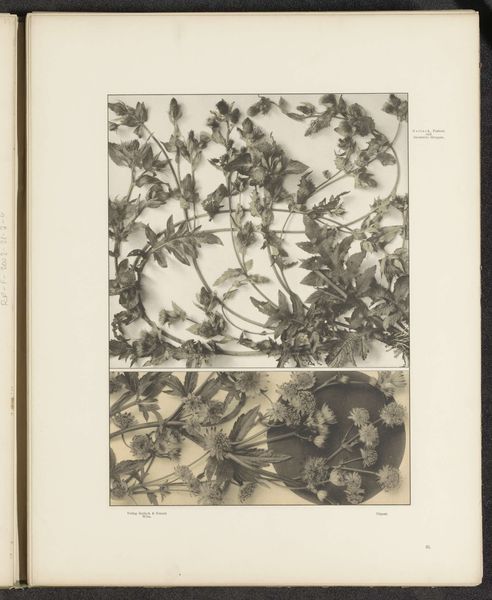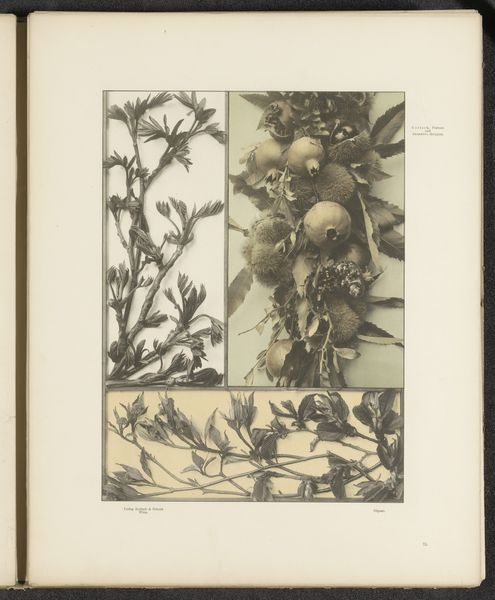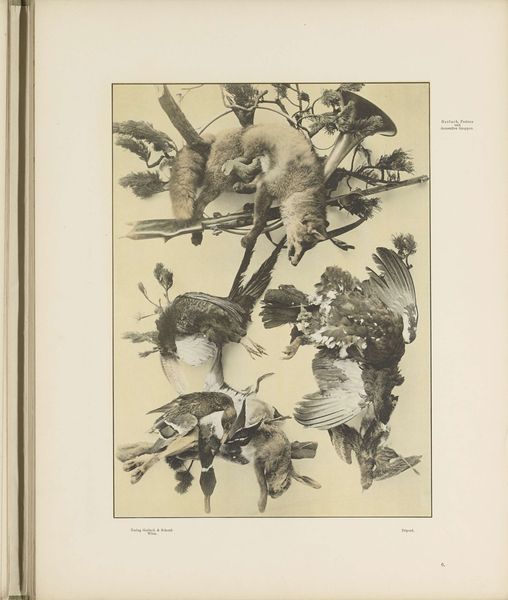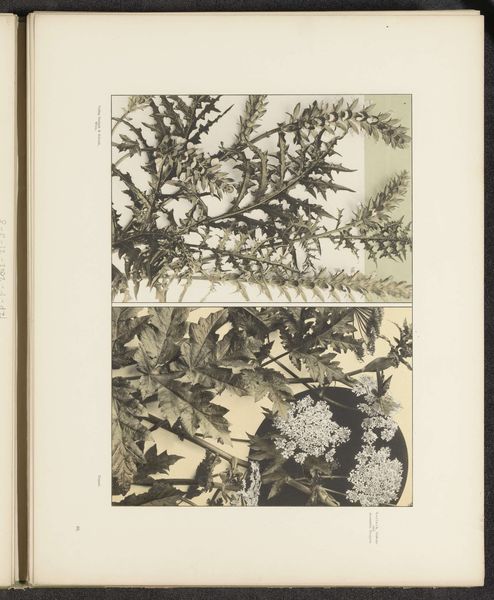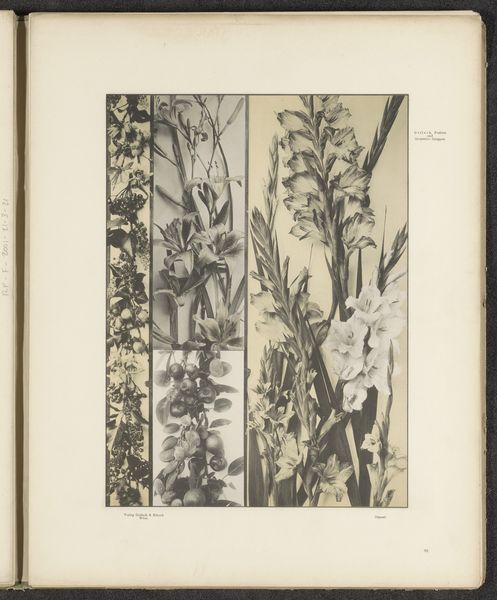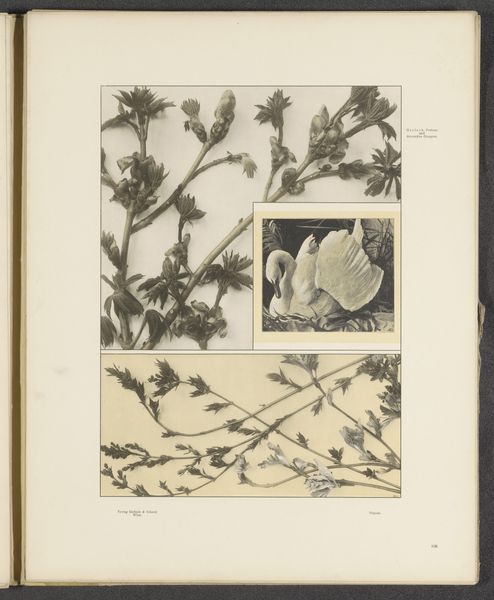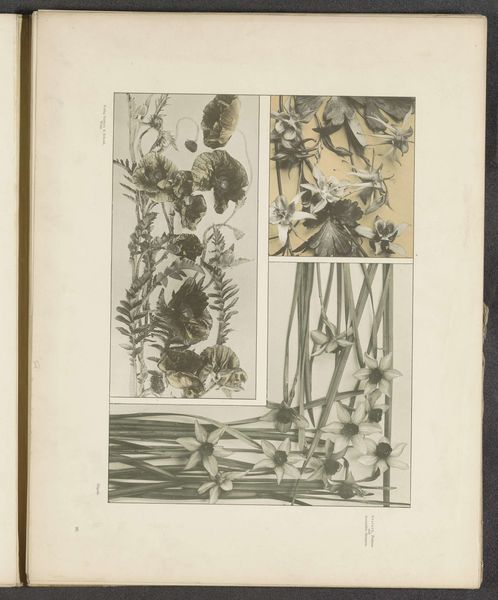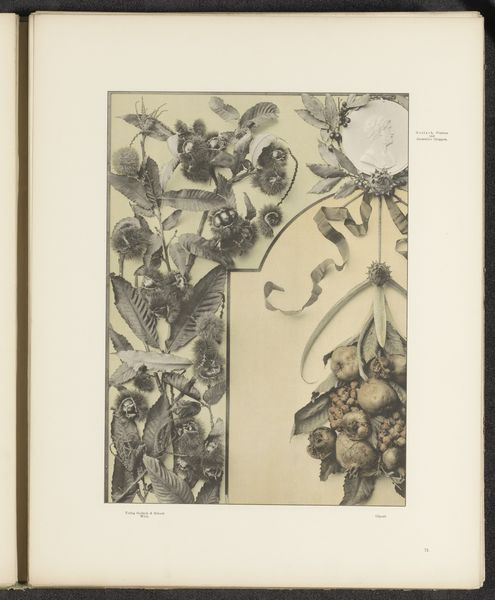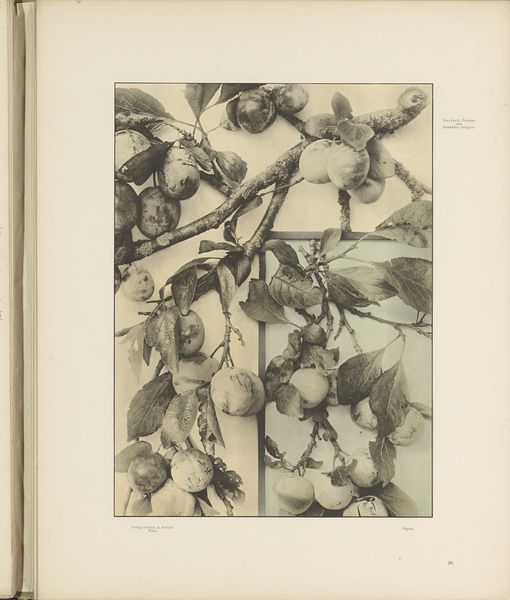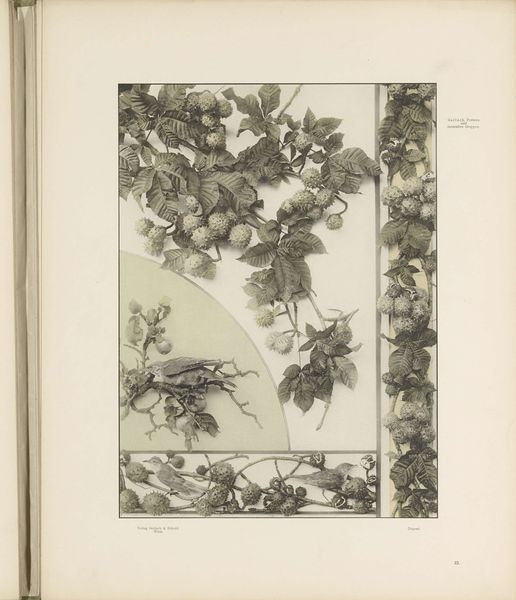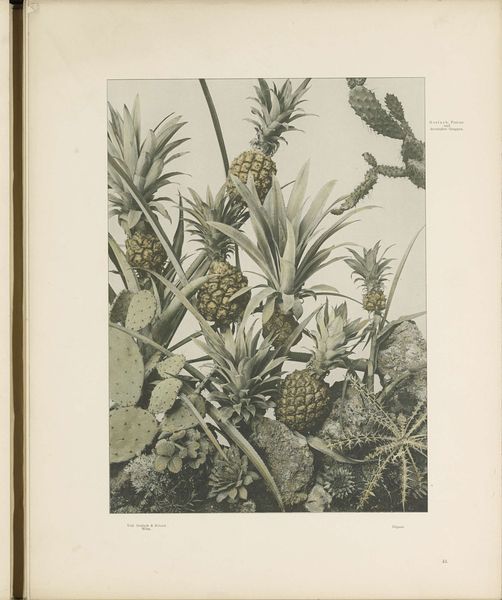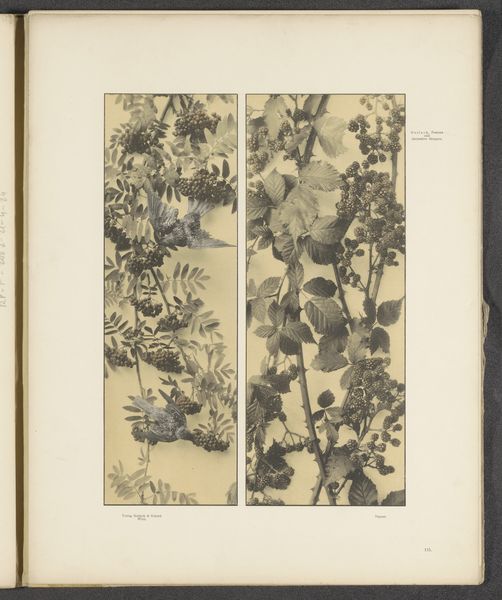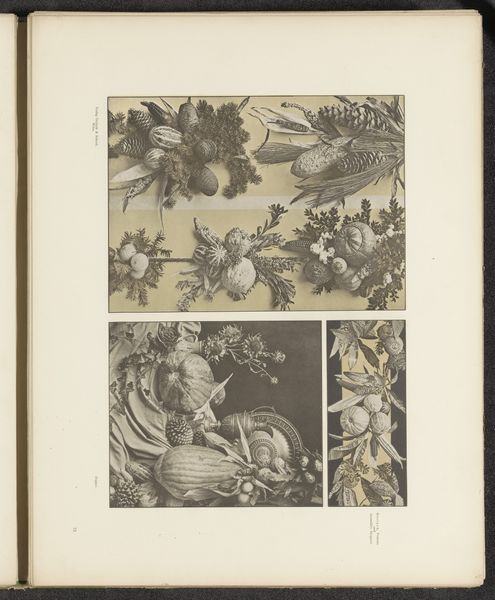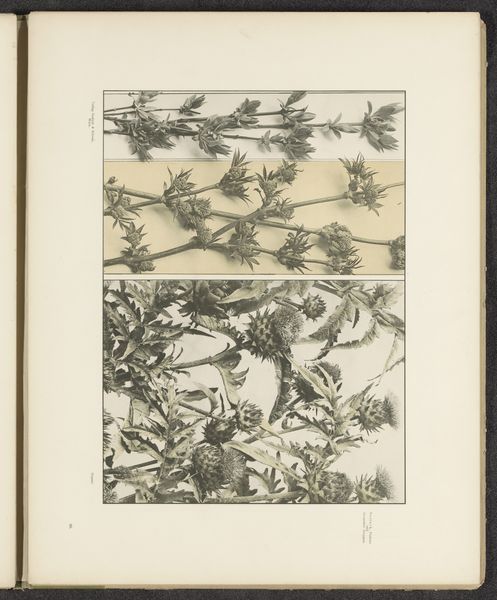
Twee decoratieve groepen met een mandoline, vogels, dennentakken en een adelaar before 1897
0:00
0:00
print, photography
# print
#
bird
#
photography
Dimensions: height 405 mm, width 320 mm
Copyright: Rijks Museum: Open Domain
Editor: We're looking at an intriguing image: "Twee decoratieve groepen met een mandoline, vogels, dennentakken en een adelaar," which translates to "Two decorative groups with a mandolin, birds, pine branches and an eagle" dated before 1897. It’s presented as a black and white photographic print. It’s certainly… unusual. All these objects staged together feels quite symbolic. How would you interpret a piece like this? Curator: This photograph, particularly given its apparent staging, compels us to think about the cultural and institutional forces at play. What does this constructed display, using taxidermied birds, an instrument, and flora, signify in the late 19th century? Editor: That’s a good question! Curator: Think about the rise of natural history museums and dioramas during this time. These displays sought to classify and present the natural world in a structured, almost theatrical manner. Does this image engage with, or perhaps parody, those museum displays? The presence of the mandolin introduces music and leisure, complicating the 'scientific' feel. Where might this photograph have circulated and what kind of public it addressed? Editor: It’s a photo so it seems geared for mass consumption and distribution, unlike the diorama which would need to be experienced in person, in a specific, institutional setting. Also, taxidermy was a pretty middle class craze then wasn’t it? So it would resonate more widely I’d guess? Curator: Exactly! Its value shifts depending on whether it's viewed as a piece of scientific record, a decorative item appealing to bourgeois tastes, or, perhaps, an early form of artistic photography critiquing both. Do you notice any tension between naturalism and artificiality? Editor: Definitely! The dead birds trying to look alive! The fact that things are both life-like and lifeless at the same time creates a strong tension, yeah! Curator: This makes me consider photography's role in shaping public perception and values in this era. Perhaps what initially looks like a simple composition reflects a larger negotiation between scientific representation, popular culture, and artistic expression. Editor: Thanks, that makes so much more sense. I wouldn't have thought about it this way.
Comments
No comments
Be the first to comment and join the conversation on the ultimate creative platform.
